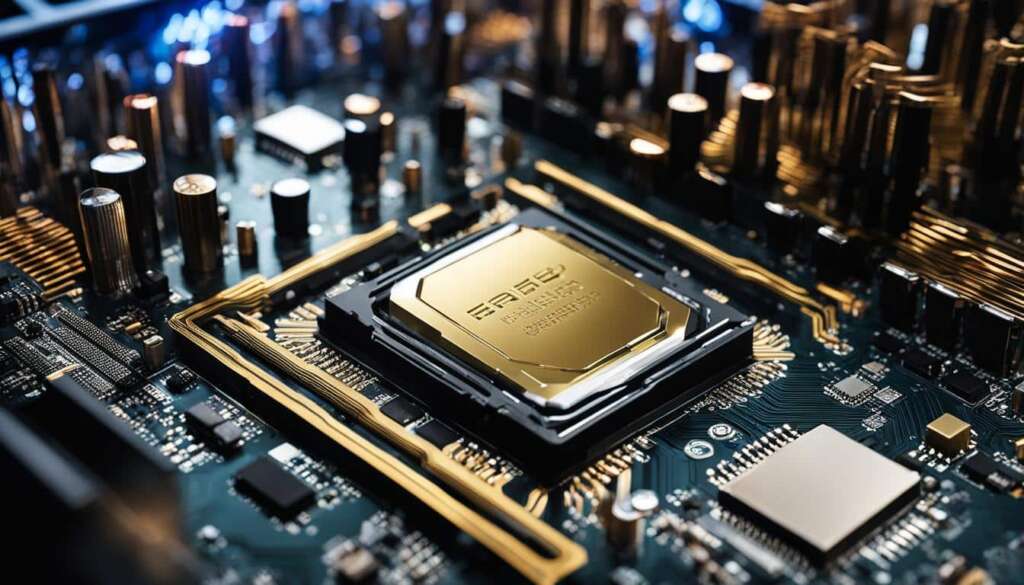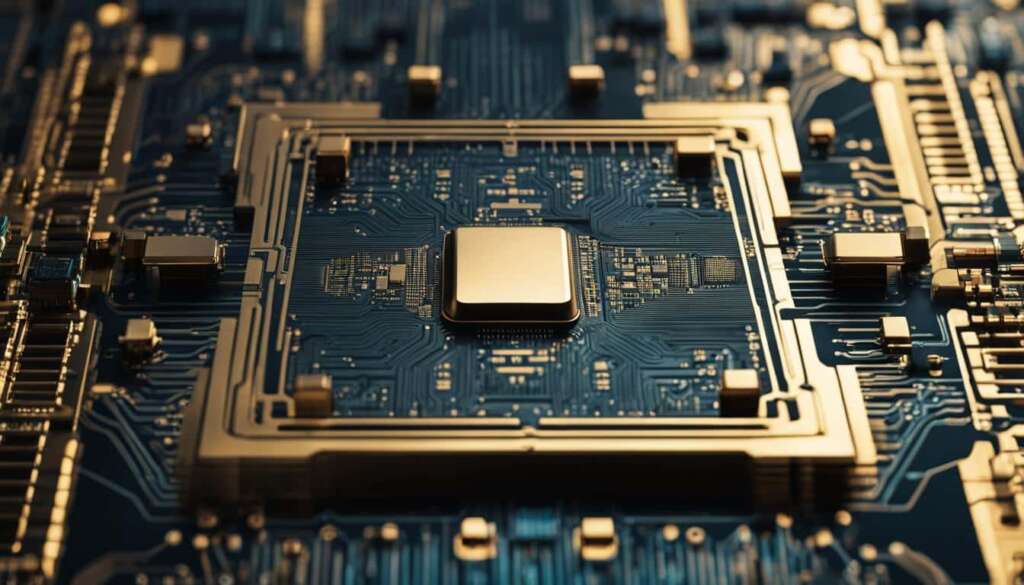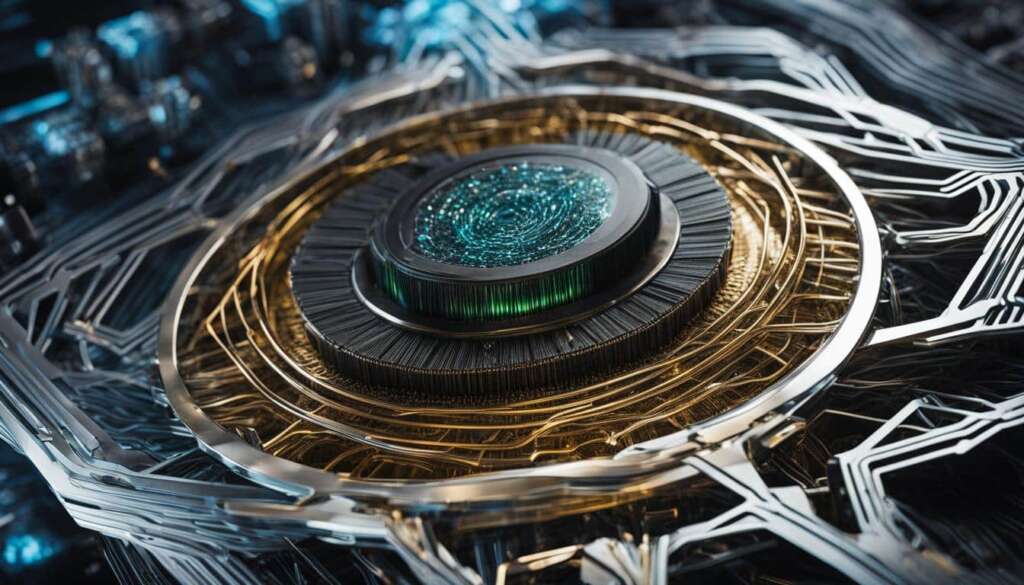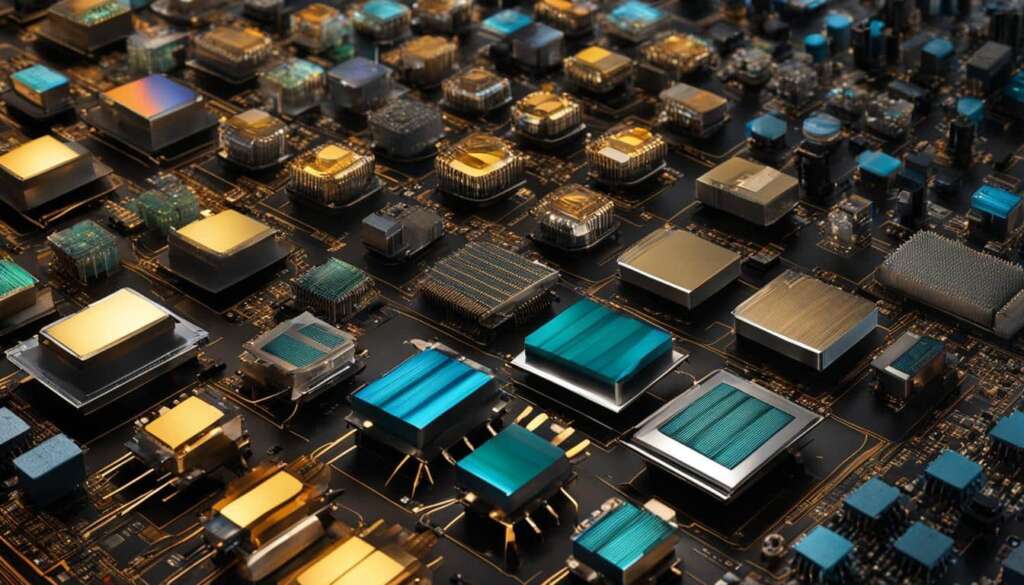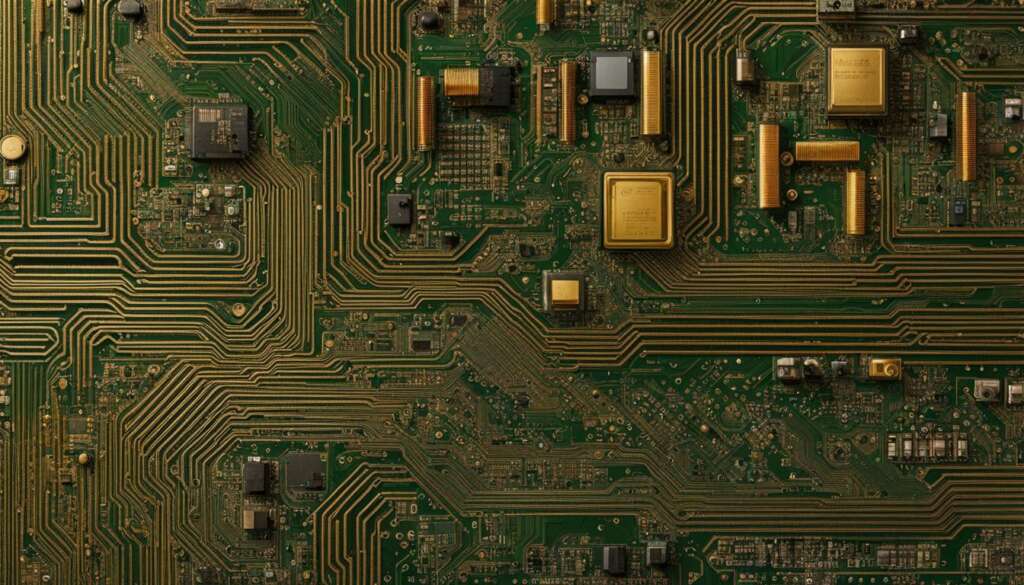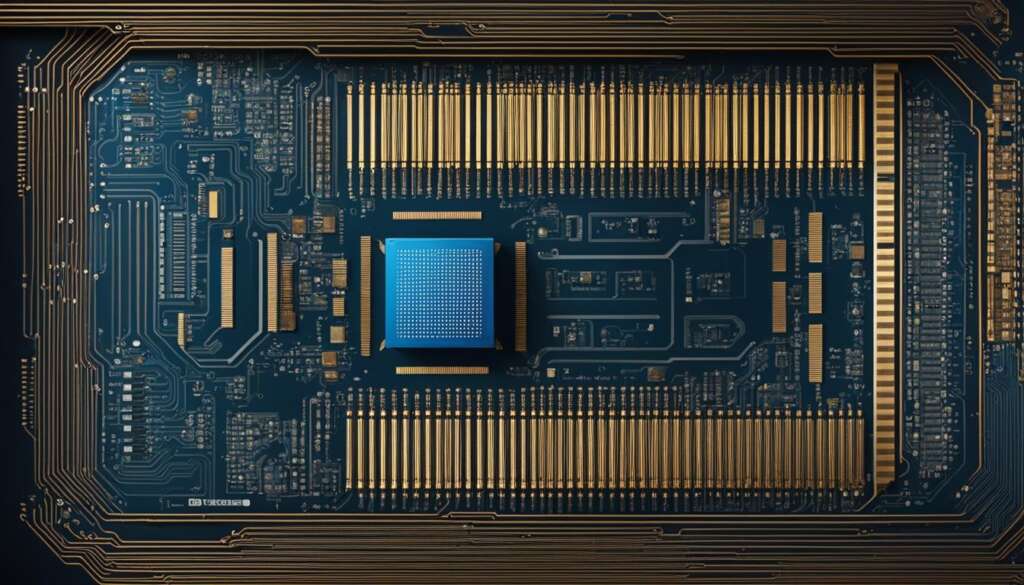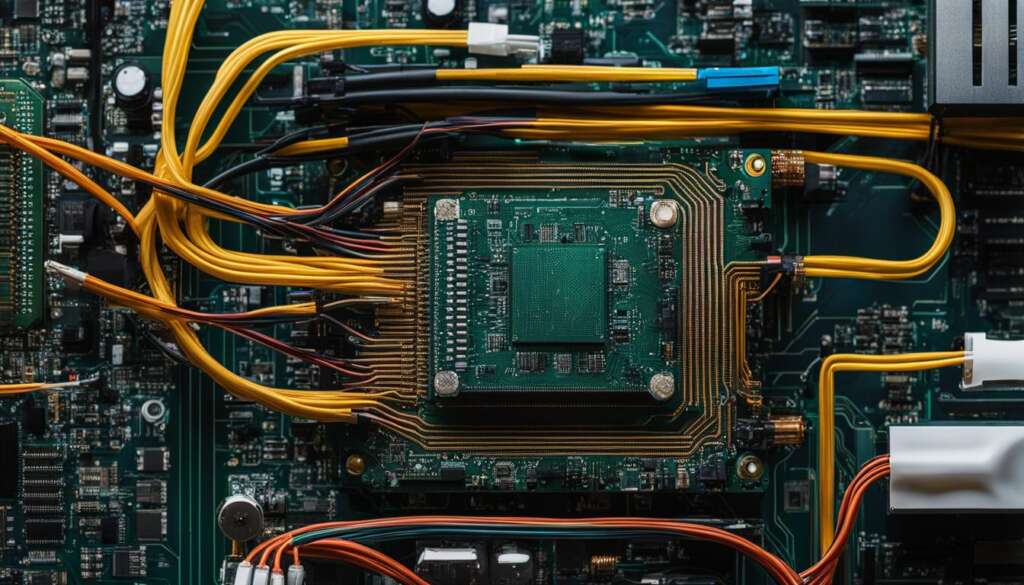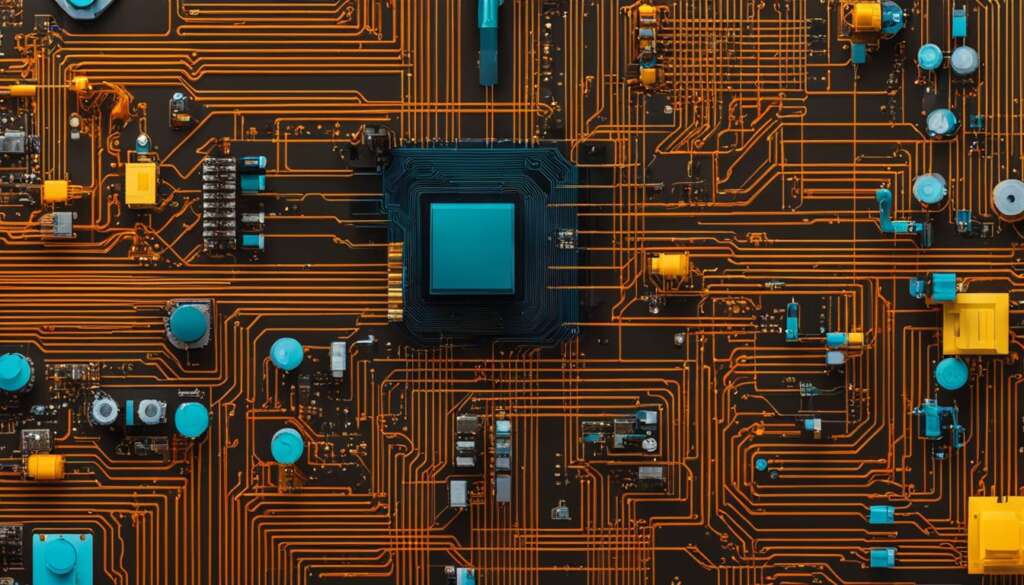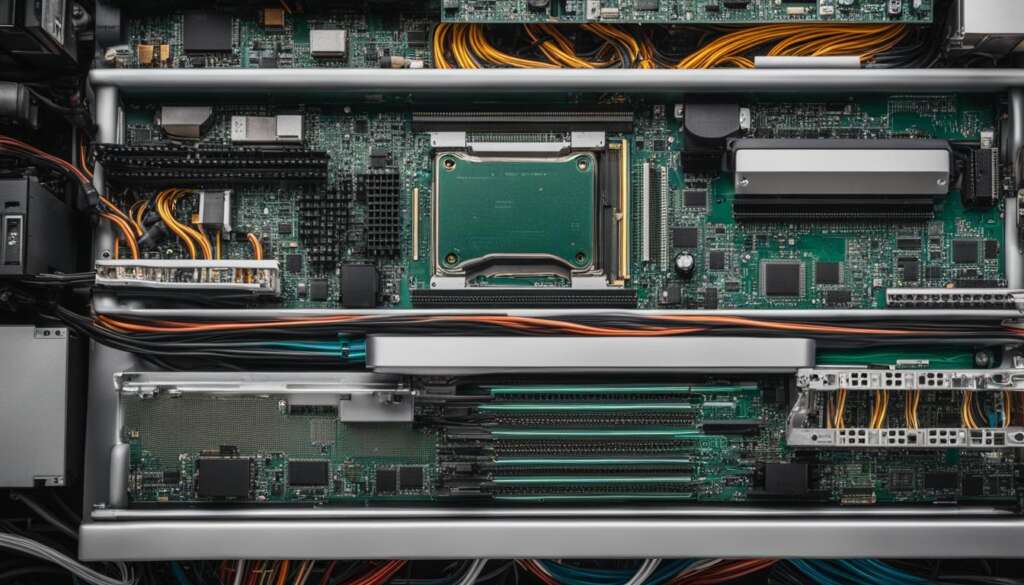Table of Contents
The advent of multi-core processors has revolutionized the world of computing, bringing with it a host of benefits and performance improvements. These processors, with their advanced architecture, have surpassed traditional single-core designs and opened up new possibilities for enhanced processing power.
Multi-core processors, as the name suggests, consist of multiple processor cores integrated into a single chip. This design allows for parallel processing, where multiple tasks can be executed simultaneously, leading to significant performance improvements.
One of the key advantages of multi-core processors is their ability to handle multiple tasks simultaneously, resulting in faster and more efficient computing. With each core dedicated to specific tasks, the workload is distributed evenly, reducing the time taken to complete complex operations.
The architecture of multi-core processors also plays a crucial role in their performance. By dividing application work into multiple processing threads and distributing them across the processor cores, these processors ensure efficient task execution without compromising on semiconductor design and fabrication limitations.
As a result, multi-core processors have become a standard feature in modern PCs and laptops, powering various applications such as virtualization, databases, analytics, high-performance computing, cloud computing, and visualization.
How do Multicore Processors Work?
Multicore processors, with their multiple processor cores, revolutionize computing by unlocking the power of parallel processing and multithreading. Each processor core is responsible for processing instructions and data based on software programs. To improve performance, designers have explored technologies such as increasing clock speeds and implementing hyper-threading.
Hyper-threading allows a processor core to handle two instruction threads simultaneously, enhancing performance in certain scenarios. However, it’s important to note that the performance benefit of additional cores is not a direct multiple and depends on factors such as shared access to memory and system buses.
Software optimization plays a crucial role in effectively utilizing multiple cores. Not all applications are optimized to take full advantage of multicore processors. While multicore processors offer improved application and hardware performance, as well as increased energy efficiency, software must be optimized to harness their full potential.
Overall, multicore processors bring the benefits of parallel processing and multithreading to computing systems. Understanding how these processors work is essential for maximizing their capabilities and achieving superior performance.
| Processor Core | Benefits |
|---|---|
| Parallel Processing | Efficient simultaneous processing of multiple tasks |
| Multithreading | Improved performance by handling multiple instruction threads |
| Clock Speed | Potential for faster execution of instructions |
| Hyper-threading | Enhanced performance in certain scenarios |
| Shared Elements | Efficient utilization of shared resources |
Applications of Multicore Processors
Multicore processors have become an essential component in various applications, revolutionizing the way tasks are executed and enabling advancements in computing. Let’s explore some of the key areas where multicore processors are widely utilized:
Virtualization
Virtualization relies on multicore processors to create multiple virtual machines with dedicated virtual processors. This allows for efficient resource allocation and the simultaneous execution of multiple operating systems and applications. Multicore processors enable virtualization to deliver enhanced flexibility, scalability, and performance.
Databases and Analytics
In the realm of databases and analytics, multicore processors play a vital role in handling parallel processing. They can efficiently process queries, analyze large datasets, and perform complex computations. By breaking down tasks into smaller pieces and solving them in parallel, multicore processors significantly improve the performance and speed of database operations and analytics.
High-Performance Computing and Cloud Computing
Multicore processors are instrumental in high-performance computing (HPC) environments, where the ability to handle massive calculations simultaneously is crucial. Whether it’s scientific simulations, modeling, or data analysis, multicore processors excel at breaking down complex tasks and executing them in parallel. Additionally, multicore processors are a cornerstone of cloud computing, enabling scalability, virtualization, and efficient resource utilization in cloud-based applications and services.
Visualization and Graphics Applications
The parallel processing capabilities of multicore processors make them ideal for graphics-intensive applications. Whether it’s rendering breathtaking visual effects in games or generating realistic graphics for architectural designs, multicore processors significantly enhance the performance and speed of visualization and graphics applications.
Overall, the versatility of multicore processors has led to their widespread adoption in a range of applications, enabling faster computations, improved efficiency, and enhanced user experiences. Their ability to handle parallel processing tasks and distribute workloads across multiple cores has transformed the way we approach computing, making multicore processors an indispensable component of modern technology.
Pros and Cons of Multicore Processors
Multicore processors offer several advantages that have transformed computing performance. First and foremost, they provide improved application performance, allowing for faster and more efficient execution of tasks. With multiple processor cores, multitasking capabilities are enhanced, enabling users to seamlessly switch between different applications without any noticeable slowdown. This is particularly beneficial for resource-intensive tasks such as video editing, gaming, and data analysis.
Furthermore, multicore processors offer better hardware performance by dividing workloads among multiple cores, allowing for parallel processing. This means that different tasks can be executed simultaneously, resulting in significant performance benefits. For example, complex calculations can be divided and processed simultaneously, reducing overall processing time. In addition, multicore processors contribute to increased energy efficiency as they distribute workloads across cores, minimizing power consumption.
However, it is important to note that not all software applications are optimized to utilize multiple cores effectively. Software optimization plays a crucial role in harnessing the full potential of multicore processors. Applications that are not optimized may not scale well with additional cores, resulting in limited performance improvements. Additionally, the development of new processor architectures can be costly, and there may be compatibility issues with older software. Another challenge is heat dissipation, as multicore processors generate more heat than single-core processors. This necessitates advanced cooling solutions to maintain optimal operating temperatures.
Pros of Multicore Processors:
- Improved application performance
- Better hardware performance
- Increased energy efficiency
Cons of Multicore Processors:
- Software optimization is crucial for maximizing performance benefits
- Potential compatibility issues with older software
- Heat dissipation challenges require advanced cooling solutions
| Pros | Cons |
|---|---|
| Improved application performance | Software optimization is crucial for maximizing performance benefits |
| Better hardware performance | Potential compatibility issues with older software |
| Increased energy efficiency | Heat dissipation challenges require advanced cooling solutions |
Evolution of Processor Architectures
Processor architectures have undergone significant evolution, transitioning from the early days of single-core processors to the complex designs of modern multi-core processors. Two key architectural approaches that have shaped this evolution are Complex Instruction Set Computing (CISC) and Reduced Instruction Set Computing (RISC). CISC architectures, characterized by their extensive instruction sets, aimed to make programming easier by allowing complex operations to be performed in a single instruction.
RISC architectures, on the other hand, sought to simplify instructions and enhance speed and efficiency by utilizing a reduced set of instructions. This approach enabled faster execution of instructions and improved performance in specific tasks. Over time, processor architectures have struck a balance between the complexities of CISC and the simplicity of RISC, utilizing the strengths of both to achieve optimal performance.
Another crucial aspect of processor architecture evolution is the integration of parallelism. As the demand for increased computing power grew, the industry turned to parallel processing techniques. By incorporating multiple cores into a processor, parallelism allows for the simultaneous execution of multiple instructions, thereby significantly enhancing performance. The introduction of multi-core processors marked a turning point in processor architecture evolution, enabling more efficient and powerful computing capabilities.
| Feature | CISC | RISC |
|---|---|---|
| Instruction Set Complexity | High | Low |
| Instruction Execution Time | Variable | Fixed |
| Code Size | Large | Small |
| Memory Usage | Higher | Lower |
| Power Consumption | Higher | Lower |
| Instruction Pipeline | Variable | Fixed |
This table provides a comparison of key features between CISC and RISC architectures. It highlights the differences in instruction set complexity, execution time, code size, memory usage, power consumption, and instruction pipeline. These contrasting characteristics demonstrate the evolution of processor architectures and the trade-offs made to achieve optimal performance.
Multicore Processors in HPC and Large Networks
Multicore processors are a crucial component in high-performance computing (HPC) and large network environments. Their parallel processing capabilities make them ideal for handling computationally-intensive tasks in these domains. HPC clusters, consisting of interconnected workstations or dedicated machines, rely on multicore processors to perform complex calculations efficiently.
“The parallel processing capabilities of multicore processors in HPC can be further harnessed using specialized libraries such as the Small-World Network Analysis and Partitioning (SNAP) library and the Parallel Boost Graph Library (PBGL). These libraries allow researchers and scientists to leverage the full potential of multicore processors for tasks such as network analysis and graph algorithms.”
In addition to libraries, graphics processing units (GPUs) also play a vital role in HPC. GPUs offer massive parallelism and are utilized to accelerate scientific algorithms. However, it is important to note that the performance of GPU acceleration can vary depending on the specific graph instances and topological properties.
Benefits of Multicore Processors in HPC and Large Networks
- Enhanced computational power for complex calculations
- Efficient parallel processing capabilities
- Utilization of specialized libraries for optimized performance
- GPU acceleration for accelerated scientific algorithms
Overall, multicore processors are an integral part of HPC and large network environments, providing the necessary computational power and parallel processing capabilities for demanding tasks. The utilization of specialized libraries and GPU acceleration further enhances their performance, enabling researchers and scientists to tackle complex problems efficiently.
| HPC Applications | Benefits |
|---|---|
| Network Analysis | Efficient processing of large-scale network data. |
| Graph Algorithms | Improved performance in solving complex graph problems. |
| Numerical Simulations | Faster execution of computational simulations. |
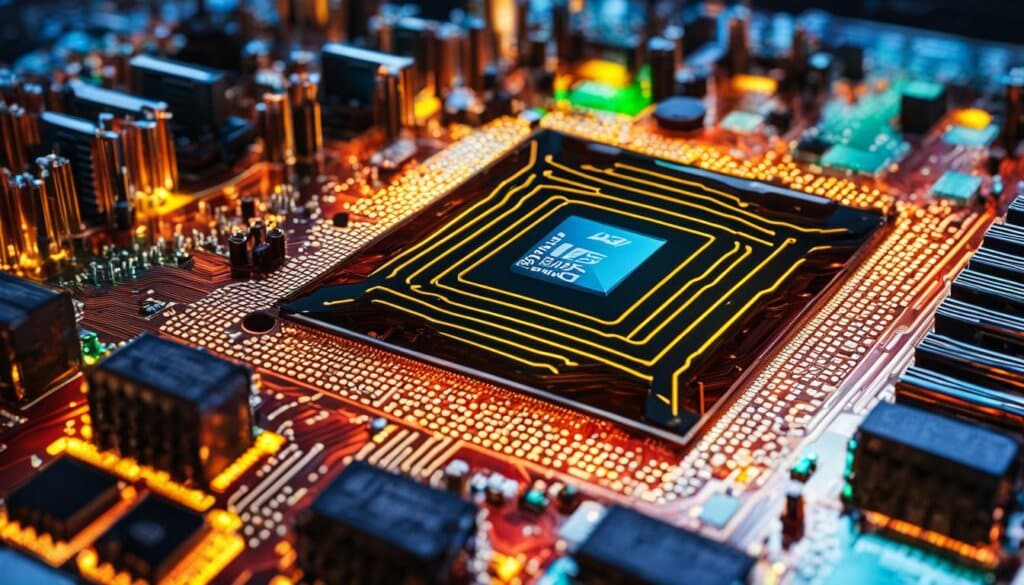
Boot Sequences and the Intel Architecture
When it comes to booting multi-core and multi-processor systems, a specific sequence of events takes place to ensure a smooth startup process. In the Intel Architecture, one of the processors is designated as the bootstrap processor (BSP), while the rest are known as application processors (APs). The BSP takes the lead in executing the initial code, initializing the system-wide BIOS/UEFI data structures.
As the BSP begins its initialization, the APs perform self-tests and await a startup signal from the BSP. The BSP then sends a Startup Inter Processor Interrupt (SIPI) message to all the APs, indicating the address from which they should start executing code. The APs start executing their respective initialization code and add their processor IDs to the system tables. Once all the APs have completed their initialization, the BSP proceeds with the execution of the operating system bootstrap and startup code.
“Booting multi-core and multi-processor systems involves a precise sequence that assigns roles to the processors and ensures their successful initialization.”
This boot sequence is crucial for the discovery and initialization of all processors in a multi-core system. It establishes the necessary communication and coordination between the BSP and APs, allowing for the efficient utilization of all processing power available. By dividing the tasks and responsibilities among the processors, boot sequences enable optimal system performance and functionality.
Table: Boot Sequences in Multi-Core and Multi-Processor Systems
| Processor | Role | Action |
|---|---|---|
| Bootstrap Processor (BSP) | Leader | Executes initial code Initializes BIOS/UEFI data structures |
| Application Processors (APs) | Follower | Perform self-tests Await startup signal from BSP |
| Bootstrap Processor (BSP) | Leader | Sends SIPI to APs Indicates execution start address |
| Application Processors (APs) | Follower | Execute initialization code Add processor IDs to system tables |
| *Once all APs finish initialization, BSP proceeds with operating system bootstrap and startup code execution. | ||
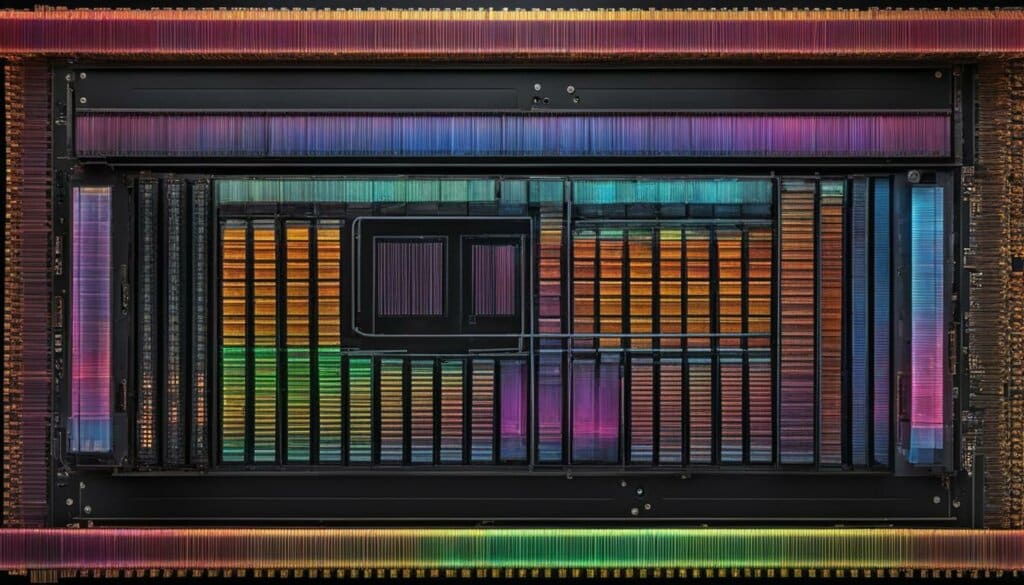
The boot sequence of multi-core and multi-processor systems plays a vital role in establishing a robust foundation for the system’s operations. By following a carefully orchestrated series of steps, the processors are initialized and coordinated, allowing for efficient utilization of their capabilities. The Intel Architecture governs the boot sequence, designating a BSP and APs and ensuring a smooth startup process from initialization to the execution of the operating system.
Beyond Silicon: The Future of Processor Architectures
The future of computing lies in the exploration of new processor architectures and innovative materials. While silicon-based processors have been the backbone of computing for decades, researchers are now looking beyond silicon to unlock even greater computational power. Two key areas of interest in this quest for innovation are quantum computing and the utilization of materials like graphene.
Quantum computing holds the potential to revolutionize computing as we know it. By harnessing the principles of quantum mechanics, quantum computers can perform computations at an exponential scale, solving complex problems in areas such as cryptography and optimization. While still in its early stages of development, the possibilities offered by quantum computing are truly mind-boggling.
Researchers are exploring the use of materials like graphene, which has unique properties that could revolutionize processor architectures. Graphene is a one-atom-thick layer of carbon that is incredibly strong, flexible, and conductive. Its properties make it an ideal material for creating faster, more efficient processors. Graphene-based processors could potentially offer higher clock speeds, improved power efficiency, and enhanced computational capabilities, paving the way for a new era of computing.
The future of computing is not limited to quantum computing or graphene alone. Advancements in material innovation continue to push the boundaries of what is possible in processor design. From new semiconductors to 2D materials, researchers are constantly exploring new avenues to improve performance and energy efficiency. These innovations promise to shape the future of computing, enabling us to tackle increasingly complex challenges and drive technological advancements in various fields.

In conclusion, the future of processor architectures holds great promise. The ongoing exploration of quantum computing and the utilization of innovative materials like graphene are opening up new possibilities for computing power and efficiency. As technology continues to advance, we can expect to see exciting developments in processor design that will shape the way we compute and interact with technology in the years to come.
Conclusion
The rise of multi-core processors has transformed computing power and efficiency. From the early designs that focused on clock speed to the complexity of modern multi-core architectures, the evolution of processor architectures has been relentless. Multi-core processors offer numerous benefits, including improved performance, parallel processing capabilities, and energy efficiency.
The future of processor architectures holds exciting possibilities with the exploration of materials beyond silicon and the emergence of quantum computing. As technology continues to progress, processor evolution remains at the forefront, shaping the devices we use and the computing power they possess. The development of multi-core processors has paved the way for more advanced and efficient computing systems, driving innovation across various industries.
With the continuous evolution of technology, the potential for further advancements in processor architectures is vast. Researchers are exploring new materials and computing paradigms like quantum computing to unlock even more powerful and efficient processors. The future holds a promise of increased computing power that will fuel the development of advanced applications and drive technological breakthroughs in a wide range of fields.
FAQ
What is a multicore processor?
A multicore processor is an integrated circuit with two or more processor cores that enhance performance and reduce power consumption.
How do multicore processors work?
Multicore processors work by dividing application work into multiple processing threads and distributing them across the processor cores, allowing for more efficient simultaneous processing of multiple tasks through parallel processing and multithreading.
What are the applications of multicore processors?
Multicore processors are used in various applications such as virtualization, databases, analytics and high-performance computing, cloud computing, and visualization.
What are the advantages of multicore processors?
Multicore processors offer improved application performance, better hardware performance, increased energy efficiency, and enhanced multitasking capabilities.
What is the evolution of processor architectures?
Processor architectures have evolved from single-core processors focused on clock speed to modern multi-core processors, with a transition from Complex Instruction Set Computing (CISC) to Reduced Instruction Set Computing (RISC) architectures.
How are multicore processors used in high-performance computing (HPC) and large networks?
Multicore processors are used in HPC clusters and large networks for computing-intensive calculations, parallel processing, and GPU acceleration.
How do you boot multi-core and multi-processor systems?
Booting multi-core and multi-processor systems involves a boot sequence that assigns one processor as the bootstrap processor (BSP) and designates the rest as application processors (APs).
What is the future of processor architectures?
The future of processor architectures includes exploration of materials beyond silicon, such as graphene, and new computing paradigms like quantum computing.
What is the conclusion of the rise of multi-core processors?
The rise of multi-core processors has transformed computing power and efficiency, shaping the devices we use and the computational power they possess.

